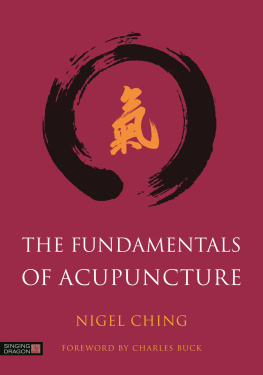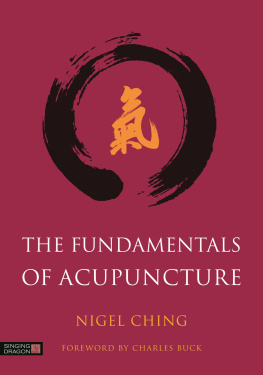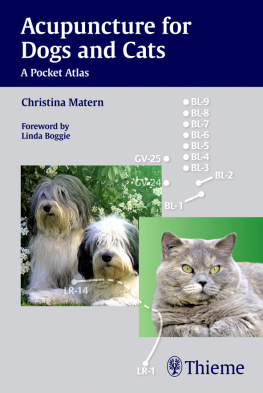Acupuncture Meridian Point Locations Atlas
Detailed meridian point locations for the 12 main meridians, conception and governing vessells.
Copyright 2010 www.AcupunctureProducts.com
Author: John Urbanski D.C.
Meridian Index
Meridian Abbreviations
There have been many abbreviations used to identify the acupuncture meridians, most are listed below. The bold abbreviations are the ones used in this text.
LU = Lung meridian
LI , CO = Large Intestine meridian
ST = Stomach meridian
SP = Spleen meridian
HT , HE = Heart meridian
SI = Small Intestine meridian
BL , UB = Bladder meridian
KI = Kidney meridian
P , PC, HC = Pericardium, Heart Constrictor meridian
TW , TH, SJ = Triple Warmer, Tri-Heater, Triple Burner, San Jiao meridian
GB = Gallbladder meridian
LV , LI, LIV = Liver meridian
CV , VC, Ren = Conception Vessel meridian
GV , VG, Du = Governing Vessel meridian
Some older text use LI for Liver and CO for Large Intestine.

Tsun or cun is the measurement of one body inch used to locate acupuncture points.
Measurement is always taken from the patients hand.
The width of the thumb is 1 cun.
Width of two fingers - 1.5 cun.
Four fingers - 3 cun.
Proportional measurements: Mid-line of spine to medial border of scapula 3 cun. Lower end of sternum to umbilicus 8 cun. Umbilicus to upper border of symphysis pubis 8 cun.
Lung Meridian (LU)
The Hand Greater Yin (Tai Yin) of the Lung has 11 points
The lung channel of the Hand Taiyin originates from the lateral aspect of the chest near the arm pit. It then travels along the anterior-medial aspect of the upper arm, passing the cubital region and arrives at the radial side of the wrist containing the radial artery for pulse palpation. Passing the thenar eminence, it travels along the radial border of the palm ending at the medial side of the tip of the thumb.

LU1 Zhongfu - 6 cun lateral to anterior midline level with the 1st intercostal space, 1 cun below LU2. Caution: needle oblique to avoid lungs.
Indications: All Pulmonary Disorders, Facial Edema, Asthma, Bronchitis, Back Pain, Chest Discomfort, Chest Pain, Cough, Dyspnea, Nasal Congestion, Neck Nodular Growths, Shoulder Pain, Wheezing.
LU2 Yunmen - 6 cun lateral to the anterior midline below the clavicle in the depression medial to the coracoid process. Caution: needle oblique to avoid lungs.
Indications: Asthma, Painful Chest, Cough, Tonsilitis, Limited Shoulder Movement and Inflammation, Shoulder Pain, Thoracic Fullness
LU3 Tianfu - 3 cun inferior to the anterior axillary fold on radial side of biceps brachii muscle.
Indications: Bronchitis, Hemoptysis, Asthma, Disorientation And Forgetfulness, Dizziness, Dyspnea, Epistaxis, Insomnia, Nosebleed, Sadness, Upper Arm Antero-Lateral Pain.
LU4 Xiabai - 4 cun inferior to the anterior axillary fold, 1 cun inferior to LU3 on radial side of biceps brachii muscle.
Indications: Asthma, Bronchitis, Nosebleed, Cardiac Pain, Cough, Dry Vomiting, Dyspnea, Shortness Of Breath, Thoracic Fullness, Medial Upper Arm Pain
LU5 Chize - On the cubital crease, in the depression lateral to biceps brachii tendon.
Indications: Arm Pain, Asthma, Bronchitis, Pneumonia, Chest Discomfort, Cough, Coughing Blood, Dyspnea, Elbow Pain, Fever, Fever Tidal, Mastitis, Respiratory Disorders, Shoulder Pain, Thoracic Discomfort, Throat Soreness, Wheezing.
LU6 Kongzui - 7 cun above the transverse crease of the wrist.
Indications: Arm Pain, Asthma, Chest Pain, Cough, Coughing Blood, Elbow Problems, Difficulty Bending Arm, Headache, Hemorrhoids, Loss Of Voice, Perspiration Absent, Respiratory Disorders, Throat Infections, Throat Soreness, Tonsilitis.
LU7 Lieque - 1.5 cun above the transverse crease of the wrist, superior to the styloid process of the radius.
Indications: Asthma, Cough, Eye Deviation, Facial Muscle Paralysis, Genital Pain, Grief, Headache, Hematuria, Hemiplegia, Jaw Disorders, Mouth Deviation, Neck Stiffness, Sadness, Throat Soreness, Toothache, Worry, Wrist Joint Soft Tissue Diseases, Dry Skin, Acute Edema of the Limbs.
LU8 Jingqu - 1 cun above the transverse crease of the wrist in the hollow on the lateral side of the radial artery.
Indications: Chronic Lung and Respiratory Problems, Asthma, Chest Pain, Cough, Dyspnea, Fever, Throat Soreness, Wrist Pain.
LU9 Taiyuan - On transverse crease of the wrist on the lateral side of the radial artery.
Indications: Purtussis, Bronchitis, Asthma, Pulmonary TB, Chest Pain, Cough, Coughing Blood, Dyspnea, Eye Disorders, Medial Forearm Pain, Headache, Palpitations, Respiratory Disorders, Throat Soreness, Toothache, Wrist Joint Soft Tissue Diseases, Wrist Pain.
LU10 Yuji - On the palmer side of the hand, at the midpoint of 1st metacarpal bone, at the junction of the red and white skin.
Indications: Abdominal Pain, Back Pain, Cardiac Pain, Chest Pain, Cough, Coughing Blood, Dyspnea, Fever, Fever Tidal, Loss Of Voice, Mastitis, Palm Heat, Throat Infections, Throat Soreness, Toothache, Voice Hoarse.
LU11 Shaoshang - 0.1 cun posterior to the nail on the radial side of the nail.
Indications: Common Cold, Cough, Fever, Mumps, Finger Pain, Stroke, Loss Of Consciousness, Mental Disorders, Nosebleed, Parotitis, Throat Infections, Throat Soreness, Throat Blockage.

Large Intestine (LI)
The Hand Bright Yang (Yang Ming) of the Large Intestine 20 points
The large intestine channel of the Hang-Yangming starts from the tip of the index finger. Running upward along the radical aspect of the index finger, it passes through the inter-space of the first and second metacarpal bones, and ascends along the lateral anterior aspect of the upper arm to the highest point of the shoulder. It then travels along the anterior border of the acromion, then descends to the supraclavicular fossa. From the supraclavicular fossa it travels upward to the neck and to the cheek, then it curves around the upper lip and exits at the corner of the mouth, where it crosses the opposite large intestine channel of the Hand-Yangming at the philtrum. it ends at the side of the nose, where is connects with the stomach channel of the Foot-Yangming.

LI1 Shangyang - 0.1 cun posterior to the corner of the nail on the radial side of the index finger.
Indications: Coma from Stroke, Deafness, Fever High, Finger Numbness, Jaw Disorders, Loss Of Consciousness, Throat Constriction, Throat Soreness, Tinnitus, Toothache, Chronic Colon Problems.
LI2 Erjian - On the radial side of the index finger distal to the 2nd metacarpal-phalangeal joint in a depression at the junction of the red & white skin.
Indications: Facial Muscle Paralysis, Fever, Nosebleed, Throat Constriction, Throat Soreness, Toothache, Trigeminal Neuralgia, Blurred Vision, Dizziness, Eye Deviation.
LI3 Sanjian - On the radial side of the index finger proximal to the head of the 2nd metacarpal bone.
Indications: Eye Disorders, Eye Pain, Finger Inflammation and Stiffness, Inflammation on the Dorsum of Hand, Malaria, Throat Soreness, Toothache, Trigeminal Neuralgia, Easily Startled.



![John Urbanski D.C. - Acupuncture Meridian Point Locations Atlas [fixed Toc and Links]](/uploads/posts/book/281557/thumbs/john-urbanski-d-c-acupuncture-meridian-point.jpg)







